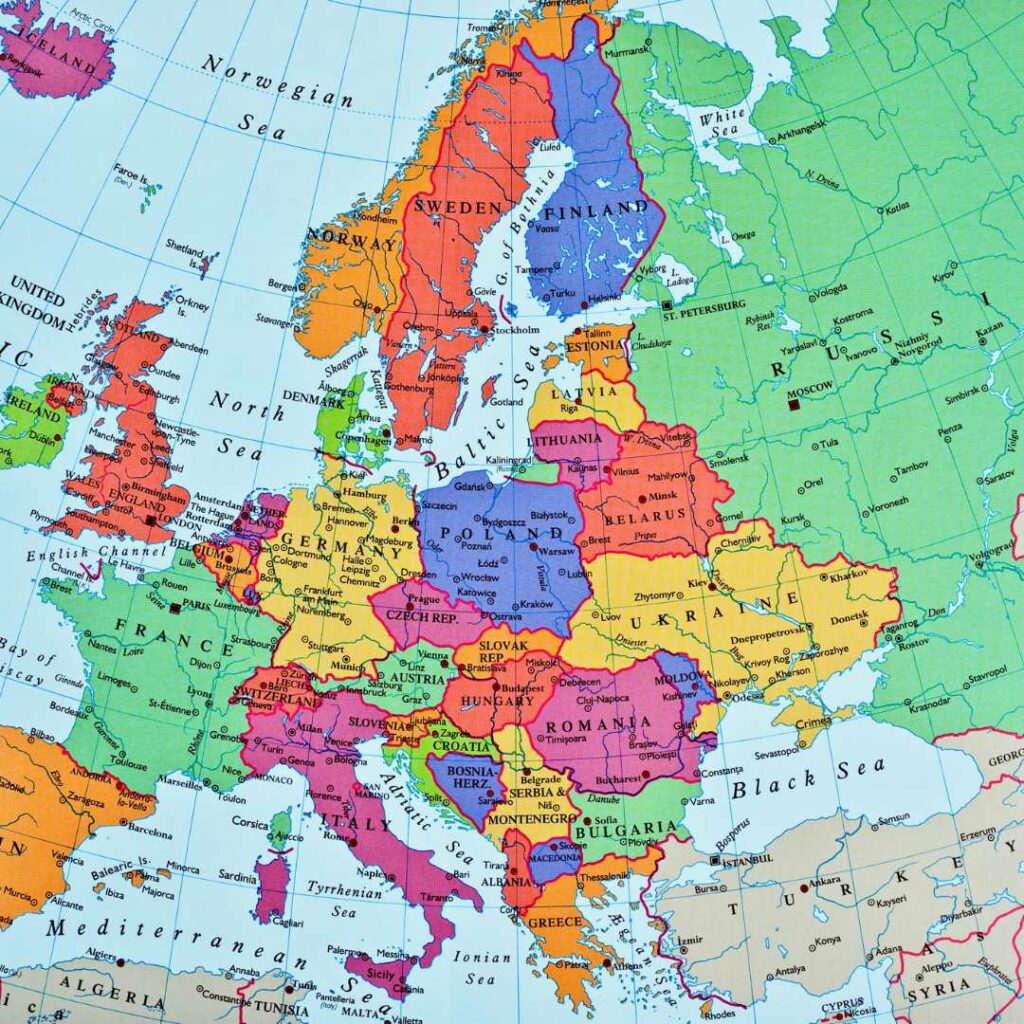A Note on Perspective: War and Economy
At SSBM Geneva, we recognise the diversity of our student body and the complexity of global events. This article aims to explore current economic developments from a neutral, academic, and business-oriented perspective. We welcome a range of viewpoints and encourage open dialogue as part of a globally inclusive educational environment.
Introduction: A New Economic Era Born from Conflict
Sometimes you hear the phrase ‘war is good for the economy’—a claim that’s been dissected, debated, and questioned over time. And for good reason: it’s not that simple. But today, the question of how war influences the economy feels especially relevant for the European Union. In response to geopolitical instability in the world, the EU is undergoing an economic transformation that extends well beyond military concerns. It is reshaping industrial policy, public spending, trade relationships and long-term business strategy.
At SSBM Geneva, where global economics meets practical business insight, this evolving landscape offers valuable lessons. For our students, researchers, and alumni across the world, understanding the concept of the “economy of war” is not about taking sides. It is about recognising how global events can rapidly shift economic priorities, influence business decisions, and open new market opportunities.

The Defense Spending Boom
In recent years, European defense spending has accelerated rapidly, reflecting new security priorities across the continent.
Germany, for example, plans to increase its defense budget to over 160 billion euros by 2029, supported by its Bundeswehr Special Fund. France is projected to reach 64 billion euros annually by 2027, based on the 2024–2030 military programming law. Smaller countries including Denmark, Lithuania and Estonia are raising their defense expenditures to between 3 and 4 percent of GDP, according to recent NATO data.
Under the EU’s Readiness 2030 framework, member states are provided with fiscal tools (loans, budget flexibility etc.) to significantly boost defense investment. Separately, while NATO’s current benchmark remains 2 percent of GDP, there have been ongoing discussions among some members and analysts about raising that figure in the future.
This shift is not limited to rearmament. It marks a fundamental change in how European countries structure their fiscal priorities, with defense becoming a central part of economic planning alongside healthcare and pensions.
Industrial Strategy: From Dependency to Sovereignty
The conflict has exposed Europe’s reliance on external suppliers in critical sectors. The inability to produce enough military equipment domestically led to renewed urgency around rebuilding manufacturing capacity within the EU.
The European Defense Industry Reinforcement through Common Procurement Act has committed over 1.5 billion euros to cross-border collaboration in defense manufacturing. Meanwhile, the European Peace Facility reimburses member states that send equipment abroad, thereby stimulating domestic production.
Defense has also become a pillar of Europe’s broader strategy for industrial sovereignty, alongside sectors such as semiconductors, clean tech and pharmaceuticals. A growing emphasis on dual-use technologies is opening new opportunities in areas where civilian and defense innovations intersect, such as cybersecurity, robotics and AI.

Fiscal Trade-Offs: Guns, Butter and Budgeting
Rising defense budgets inevitably raise questions about trade-offs. The EU has relaxed its fiscal rules until 2028 to enable increased military investment, but this flexibility comes with long-term implications.
Several member states have delayed climate-related infrastructure projects, while others have reduced or frozen budgets in education and social welfare, according to recent ECB reports. National debt levels are projected to increase by between 2 and 3 percentage points of GDP over the next five years, based on IMF forecasts.
Despite the challenges, the European Commission has modelled scenarios in which coordinated defense investment could raise EU GDP by 0.3 to 0.5 percent by 2028, assuming procurement remains within the bloc and supports domestic suppliers. However, with only about 20 percent of defense purchases currently made through joint programs, much of the economic benefit may flow outside the EU, particularly to U.S. suppliers.

A Broader Strategic Realignment
This economic transformation also reflects a deeper strategic realignment. Geopolitical sanctions and trade restrictions are reshaping energy markets, prompting accelerated shifts toward alternative sources and suppliers.
Transatlantic tensions are also influencing how Europe prepares for an uncertain future. With U.S. political volatility affecting NATO cohesion, European countries are seeking greater autonomy in both military and economic terms.
While NATO’s internal targets remain centered on the 2 percent GDP benchmark, there is growing alignment between NATO and EU industrial strategies. Both organisations encourage members to strengthen security and defense readiness, integrating defense into broader economic resilience planning. This signals a long-term structural change.

What It Means for You: Lessons for SSBM Students and Professionals
For students and professionals in business, finance and policy, this moment offers timely insights. The rise of the economy of war highlights the importance of industrial policy, public-private collaboration and geopolitical risk awareness.
Careers in procurement, logistics, supply chain strategy, risk management and economic forecasting are becoming increasingly relevant. Dual-use sectors, such as energy tech, communications infrastructure and AI, are also attracting new investment and innovation.
At SSBM Geneva, students are well-positioned to navigate these developments. Understanding how global disruptions impact economic systems is critical to building adaptive, strategic leadership for the future.
Conclusion: The Return of Strategic Economics
Europe is not only responding to geopolitical instability. It is actively reimagining its economic foundations with a renewed focus on sovereignty, resilience and long-term competitiveness.
Strategic economics is no longer theoretical. It is shaping real investment, influencing public policy and creating new career paths. For current and future business leaders, understanding these forces is essential.
At SSBM Geneva, we remain committed to preparing students for the realities of a dynamic, interconnected world. That includes recognising how conflict, policy and industry can intersect in ways that define the next chapter of global economic leadership.

